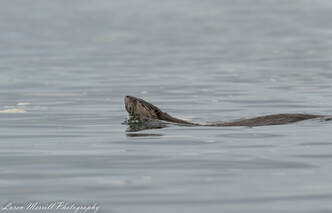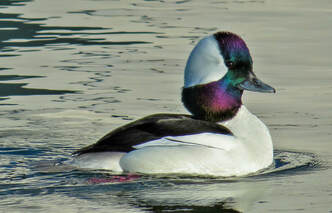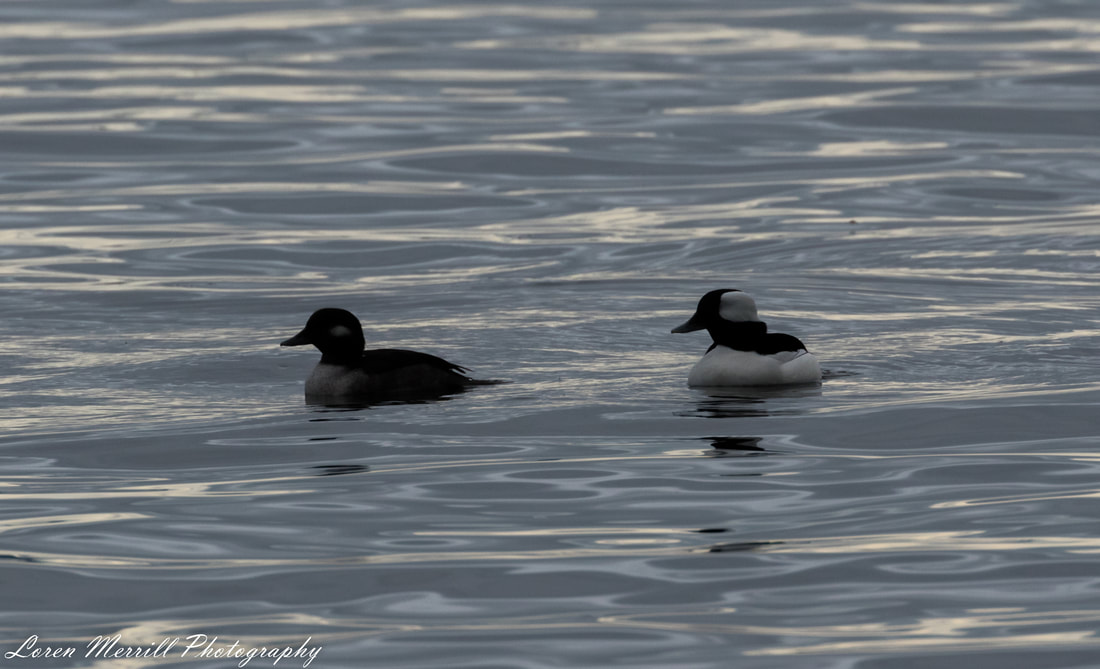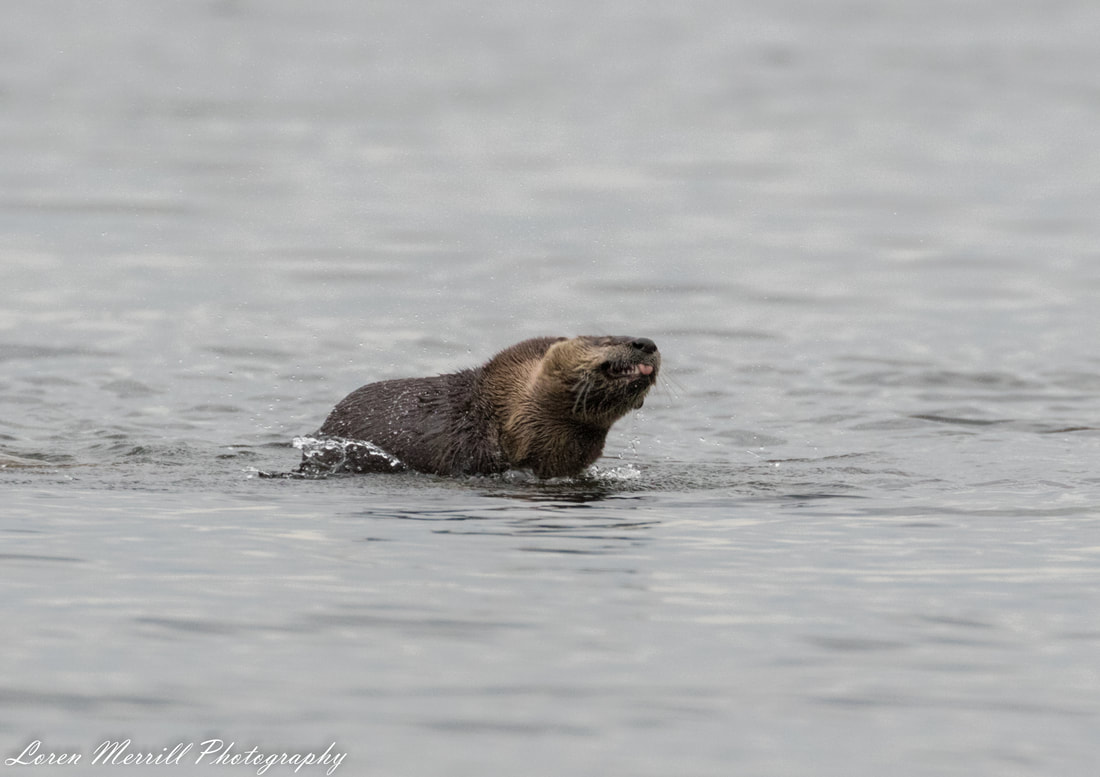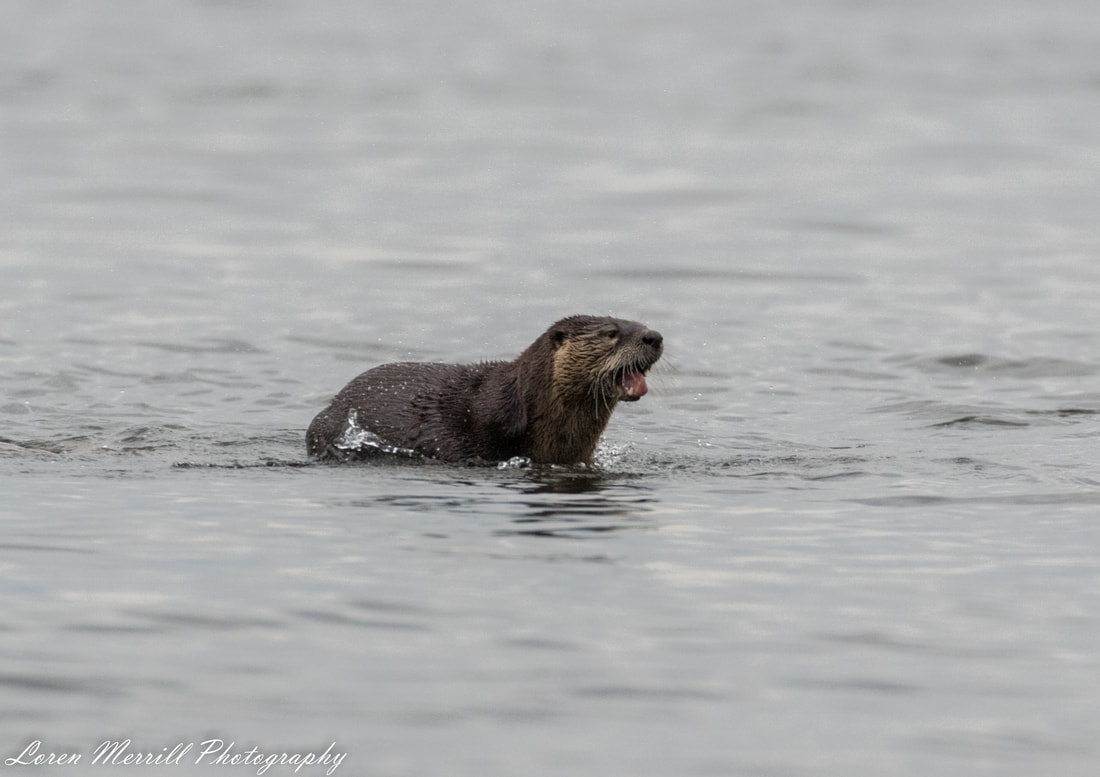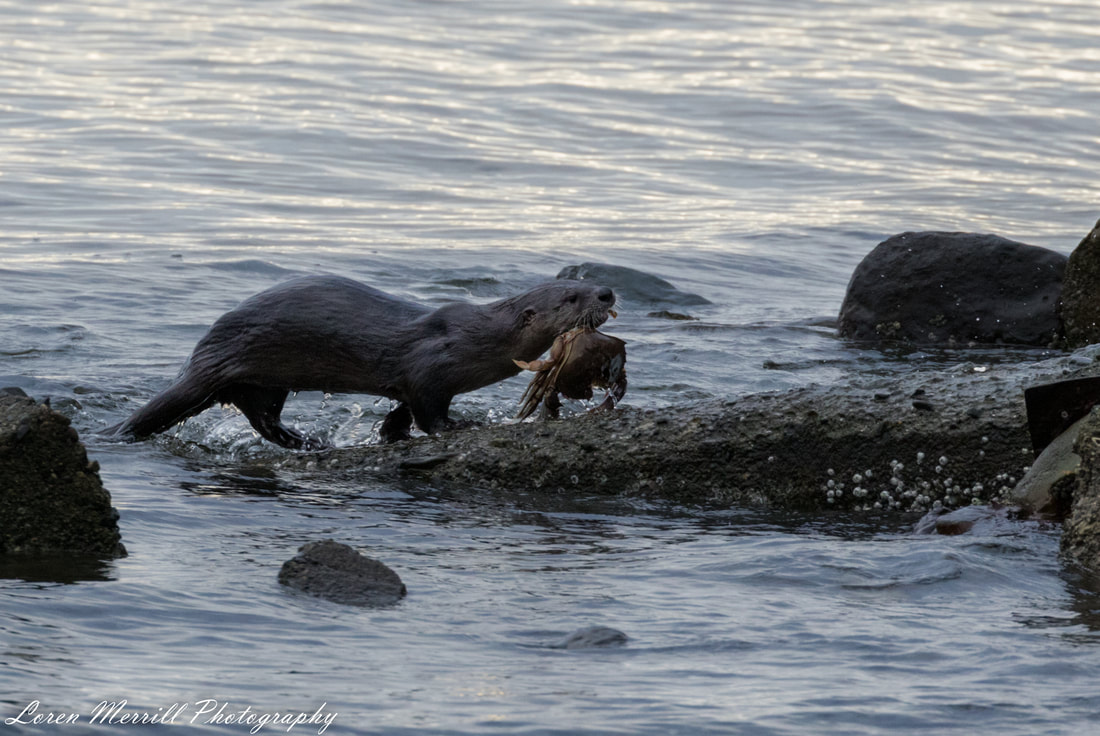|
When I conceived of this blog many months ago, my vision was that it would provide a forum for me to share interesting natural history observations with others who are fascinated by the natural world. Our “writing retreat” to British Columbia and upcoming trip to Africa should provide opportunities for some adventure travel components, but the guts of this thing will be about the animals I encounter out in the wilds, or just outside the door. So, without further ado, the view out the door from our new home in Ladysmith, on Vancouver Island, British Columbia. We occupy the first floor of a three story house built against a steep slope on the south side of Ladysmith Harbor. Our front (and back) stoop is a 10 foot wide expanse of yard that terminates in a calf-high stone and concrete platform that forms the top of a 4 foot high seawall. Our patch of home for the next few weeks is bordered by a long peninsula to the north, the wooden pylon skeletons that used to anchor a long dock to the west, and bulging wooded hills to the east. We have lots of neighbors here, and I have been quite busy trying to get to know them all. The first I became acquainted with were an excitable group of buffleheads. These petite ducks are easily some of my favorite neighbors of all time. A group of them shelters in the water just off our seawall most nights; their small, shadowed shapes floating on the water’s surface are one of the first things I can make out in the morning. They cluster together in the dark, sleeping or resting until it becomes light enough for them to see. On our first morning here, I grab my folding camp chair and venture outside, with sunrise still an hour away. The bufflehead group doesn’t seem to mind my company too much as I settle down into the chair a few feet back from the top of the seawall. We were all buffered against the crisp predawn air; me in a flannel-lined hoodie, with a steaming mug of coffee in my hands, they in sharply contrasting black and white feather-down coats. As the undersides of the clouds begin to lighten, the ducks begin stirring. Over the rim of my mug, I watch them stretch, fluff out their feathers, and prepare for the day. These ducks dive for their breakfast, and while I would succumb to hypothermia in about 5 minutes (or seconds), buffleheads come prepackaged in a down-insulated wetsuit. The outer layer of feathers forms a protective, water-proof barrier, while the fine body-down traps an insulating layer of air against the body, keeping the ducks warm. Previously, people thought that the feathers’ water-repelling ability was due to the application of a viscous, oily/waxy substance produced by a special gland at the base of the tail; the uropygial gland (sometimes called the preen gland or oil gland). This gland is present in all birds, with ostriches as the lone exception (note—cormorants and anhingas DO have uropygial glands, contrary to popular belief). Recent work has questioned the role of the preen gland, and evidence indicates that the water-proofing capabilities are provided primarily by the structural integrity of the overlapping outer feathers (think finely interlocking roofing shingles). The role of the uropygial gland secretions is not entirely clear, but it has been linked to a number of functions: anti-bacterial and anti-ectoparasitic activity, UV protection, and more recently, communication. The odors produced by the volatile organic compounds are so distinctive that one researcher who studies them has compared some species’ scents to food. The brown-headed cowbird, for example, allegedly smells like sugar cookies. I don’t recall ever having the urge to take a nibble out of the cowbirds I was handling, but maybe I didn’t get my nose in close enough. The buffleheads jump-dive head first underwater, propelling themselves with their webbed feet to the bottom where they look for small crabs, amphipods, snails, clams, small fish, and other suitable food. A transparent membrane (the nictitating membrane) protects their eyes underwater and allows them to see clearly. After locating a suitable morsel, the bird usually swallows the food whole, and a powerful gizzard crushes the item, including hard-shelled bivalves. The bird is then able to extract the nutritious parts, and will regurgitate or defecate the non-digestible parts later. The birds prefer to dive as a group; usually one bird will take the initial plunge and the others will immediately follow suit. After their foraging bout on the bottom, the birds ascend to the surface, popping up like buoyant little duck corks. As my coffee grows cold and drunk, the flock meanders a little to the east towards a small rock outcropping where a small stream empties into the harbor. Suddenly, the birds erupt in a rush of wings, flying a hundred meters low over the water before settling back down. I watch them fly and then turn to see what has spooked them. Another, friskier neighbor has arrived on the scene: a North American river otter. That isn’t a typo—it is a river otter rather than a sea otter. And we have a little clan of river otters, between 4 and 5 animals, who call our small patch of ocean home. Their home base appears to be up the stream to our east, but at least one animal can be found patrolling the waters at almost any point during the day. There may be orcas outside the harbor, and sea lions and harbor seals that make occasional appearances, but these lithe, rambunctious members of the weasel family are the top dogs of our harbor. The birds in the area keep a healthy distance between themselves and the otters. I have only witnessed one interaction between an otter and a bird in the two weeks we have been here, and it was the tail-end of an encounter with a common loon. A splashing commotion a hundred or so meters away caught my attention out the window, and I grabbed my binoculars in time to watch a loon butterfly-propelling itself across the water’s surface. This is unusual for loons, which generally dive to escape a perceived threat. After flapping across the water for about 30 meters, the loon stopped, looked around, and then casually flap-stretched itself back to respectability. I looked to where the loon had been and saw a lone otter rolling about in the water. Whether it had attacked the loon or merely tried to steal the loon’s meal I don’t know, but the loon was spooked enough that it flopped unceremoniously across the water for quite a distance. The loon and the other birds likely have good reason for being wary of the otters. At Marin Headlands in California, there is a group of river otters that specializes in catching birds. The otters there mount a submarine attack on gulls and ducks floating in one particular lagoon, and pull them underwater where they dispatch them. I am sure that our otters would be more than happy to add some fowl to their meal-plan, and the birds seem to share that sentiment. But in my opinion, the otters already have the perfect diet; Dungeness crab. I have seen the otters eating small flounder or sole, and an occasional sculpin-like fish, but their diet is dominated by crab. And they can pull in some big ones. On more than one occasion I have wished I could train these otters to bring me crabs. Instead I am relegated to the role of seafood-voyeur, watching them crunching merrily away, squeaking their joy to their fellow crab-enthusiasts. I recently wondered if they do anything special to deal with the claws of the large crabs; some of the crabs they catch could do some damage, or at least cause some pain, if they could get their claws on the otters’ face or paws. I examined one image I captured of an otter with a crab destined for the den, and looked to see if there was evidence of them immobilizing the crabs. It was immediately apparent that they do. If you look at the head area of the crab, you can see that the region where the neural ganglion should be located is missing. The otters do exactly what people do when immobilizing or humanely killing a crab- they pith it. I was thrilled by this discovery, although I probably should not have been surprised. Otters are not only intelligent, they have been shaped by natural selection to quickly incapacitate prey that might pose a threat or be an escape risk. Removing the command center of the crab allows the otters to enjoy their seafood at leisure.
As the resident trouble-makers, the otters will be making a number of future visits to this post. In fact, they make an appearance in the next post, although in that entry an otter winds up the victim of a kleptoparasitic stealth raid by the top dog of the Ladysmith skies; the bald eagle.
0 Comments
Leave a Reply. |
About the author:Loren grew up in the wilds of Boston, Massachusetts, and honed his natural history skills in the urban backyard. He attended Cornell University for his undergraduate degree in Natural Resources, and received his PhD in Ecology from the University of California, Santa Barbara. He has traveled extensively, and in the past few years has developed an affliction for wildlife photography. Archives:
|
